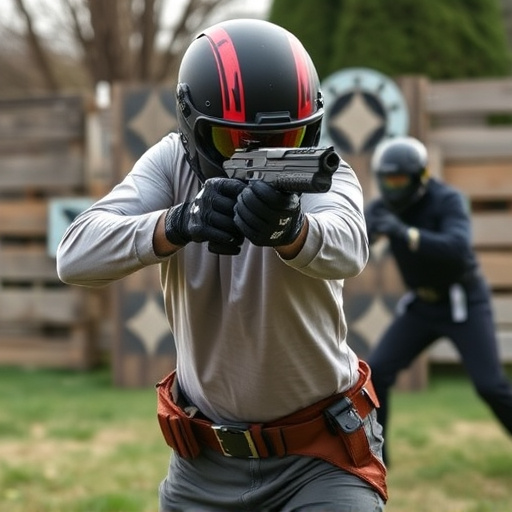Concealable stun guns designed for women's self-defense rely heavily on strategic electrode spacing. This spacing ensures a powerful but controlled electric shock, balancing effectiveness with discreet concealment. Closer spacing delivers intense shocks for quicker incapacitation in close encounters, while wider spacing offers versatility for typical short-range situations. Informed choices in electrode placement are crucial for optimal personal safety.
“Stun guns have emerged as powerful self-defense tools, especially for women seeking personal safety. However, understanding the intricate details of electrode spacing is vital to ensuring their effectiveness. This article delves into the science behind stun gun electrodes, exploring how their placement influences the device’s impact. We’ll guide you through optimal electrode distance considerations, real-world testing insights, and highlight concealable stun guns tailored for women’s self-defense needs. Maximize your safety knowledge and make informed choices.”
- Understanding Stun Gun Electrode Spacing
- The Role of Electrode Placement in Stun Gun Effectiveness
- Concealable Stun Guns: A Female's Self-Defense Companion
- Key Considerations for Optimal Electrode Distance
- Real-World Scenarios: Testing Stun Gun Performance
- Choosing the Right Stun Gun Based on Electrode Spacing
Understanding Stun Gun Electrode Spacing
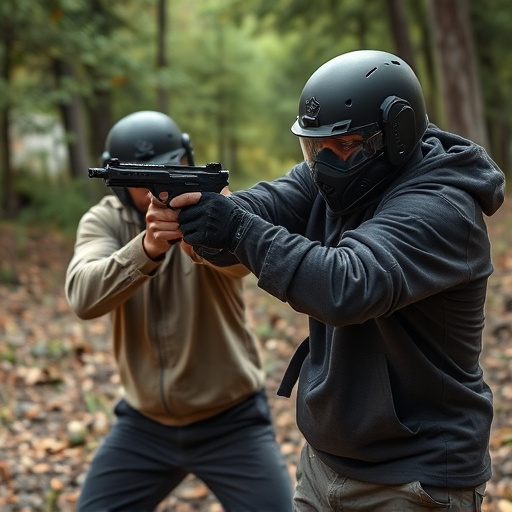
Stun gun electrode spacing refers to the distance between the two prongs or electrodes on a stun device, which are responsible for delivering an electric current to immobilize a target. This concept is crucial when it comes to ensuring the effectiveness of concealable stun guns, especially those designed for women who may want a personal defense tool they can easily carry and access in emergencies.
The optimal electrode spacing varies depending on factors like the size of the user’s hand and the intended use. For instance, smaller stun guns meant for discreet carry by women often have electrodes placed closer together to accommodate smaller hands while still allowing for good contact with a potential attacker. Proper spacing ensures that when the device makes contact, it delivers an efficient electric shock, neutralizing the threat without causing serious harm.
The Role of Electrode Placement in Stun Gun Effectiveness
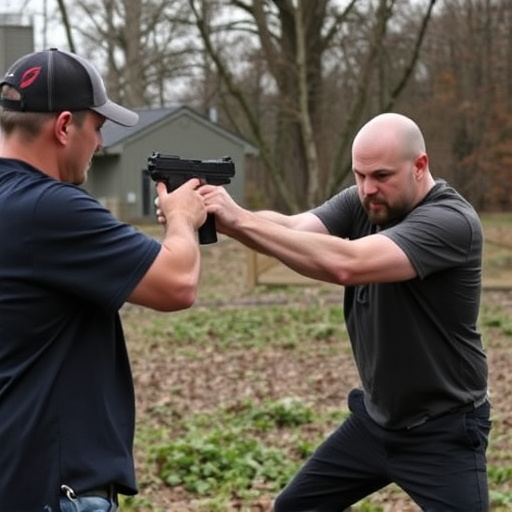
The placement of electrodes on a stun gun is a critical factor in determining its effectiveness, especially when designed for concealability and targeted at women’s self-defense needs. Concealable stun guns often have smaller designs, which can limit electrode size and quantity. However, strategic placement can make up for this. Close electrode spacing ensures that the current flows directly through the target area, delivering a powerful shock with minimal energy expenditure.
For women carrying concealed stun guns, precise electrode positioning is essential. This allows for a more focused and effective discharge, enabling users to incapacitate an attacker quickly without causing unnecessary harm. The design should prioritize direct contact, ensuring that when activated, the electrical current flows directly from one electrode to another, maximising the impact on the assailant’s nervous system.
Concealable Stun Guns: A Female's Self-Defense Companion
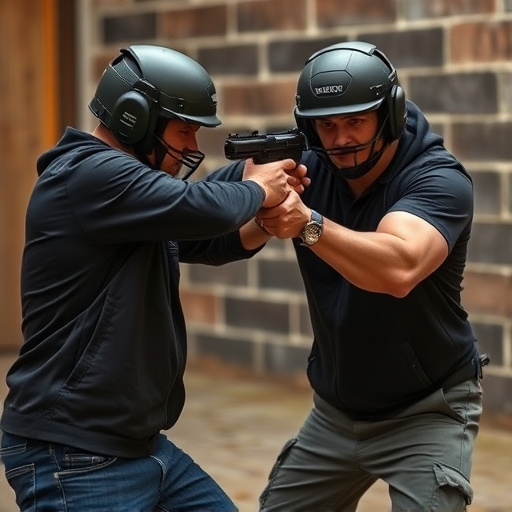
Key Considerations for Optimal Electrode Distance
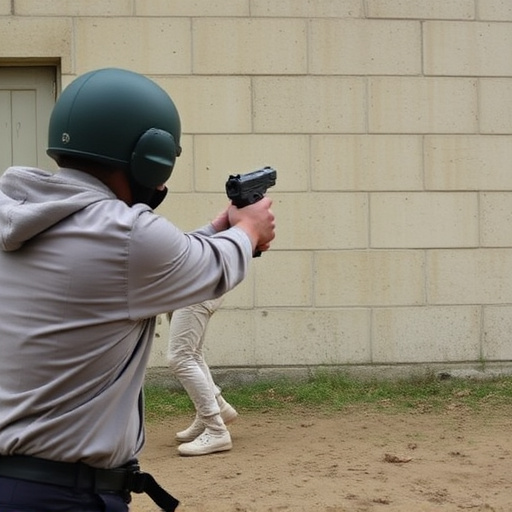
When considering the effectiveness of a stun gun, one of the critical factors is the electrode spacing—a key aspect often overlooked but with significant implications for performance. In the context of concealable stun guns designed for women’s self-defense, optimal electrode distance plays a pivotal role in ensuring the device’s reliability and impact. The goal is to strike a balance between having close enough electrodes to deliver a powerful shock and maintaining a design that allows for easy concealment without drawing undue attention.
For personal defense tools like concealable stun guns, manufacturers typically recommend specific electrode spacing to guarantee a consistent and strong jolt. This distance is crucial as it directly affects the device’s ability to disrupt an attacker’s muscular control and balance. Women looking for self-defense options should consider models with electrodes strategically placed to maximize shock transmission while minimizing bulkiness, ensuring the stun gun can be easily carried and concealed on the body.
Real-World Scenarios: Testing Stun Gun Performance
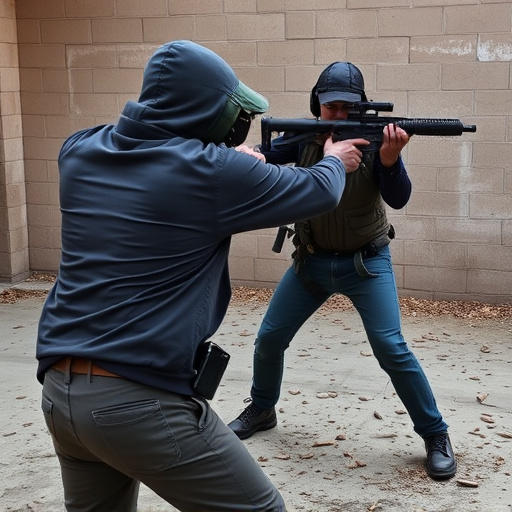
In real-world scenarios, testing the performance of stun guns is essential to understanding their effectiveness. These tests often mimic high-stress situations where a concealed stun gun for women might be needed. Researchers and law enforcement agencies conduct simulated altercations to assess the device’s impact, stun duration, and recovery time. Such tests not only evaluate physical outcomes but also consider psychological factors, ensuring that users feel empowered while remaining safe.
The spacing of electrodes on a stun gun is a critical design aspect. In practical applications, this feature determines how quickly and consistently the device can incapacitate an attacker. Testing involves analyzing electrode placement against various body types and sizes to guarantee optimal performance across different users. This approach ensures that concealed stun guns for women provide reliable protection without causing unnecessary harm, making them valuable self-defense tools in unpredictable situations.
Choosing the Right Stun Gun Based on Electrode Spacing
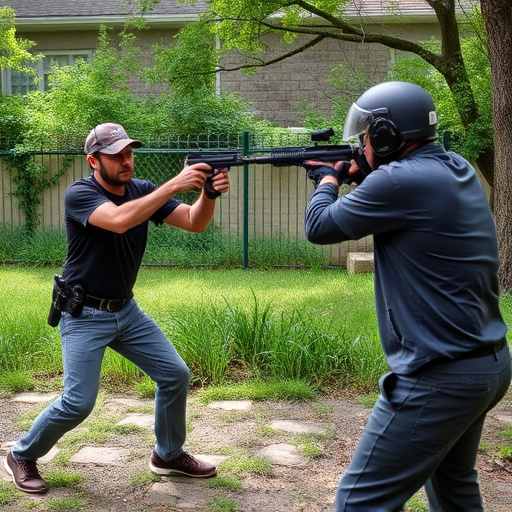
When considering a stun gun, especially for self-defense purposes, understanding electrode spacing is key to effectiveness. The design and placement of electrodes significantly impact the device’s ability to deliver a powerful shock. For users looking for concealable stun guns suitable for women, this factor becomes even more critical.
Opting for a stun gun with the right electrode spacing ensures the current flows smoothly through the target, leading to faster muscle immobilization. Closer electrode spacing generally results in a stronger jolt, making it ideal for close-quarters encounters. However, wider spacing can still provide effective protection, especially when considering that a stun gun’s range is typically short, allowing users to get close enough to deploy it successfully.
When selecting a stun gun, especially for women’s personal safety, understanding electrode spacing and its impact on effectiveness is key. The optimal distance ensures powerful shocks, making concealable stun guns reliable tools for self-defense. By considering factors like body type and threat level, users can maximize the potential of these devices in real-world scenarios. Choosing the right stun gun with strategic electrode placement can provide peace of mind and enhance personal security.
